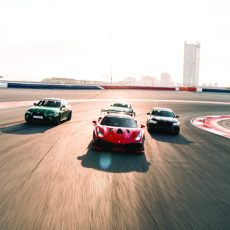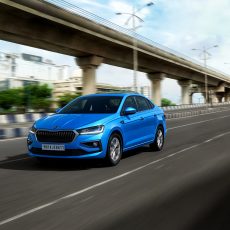Carl-Peter Forster, jaguar-Land Rover’s new overlord, has big plans for his British brands. At Jaguar, he wants to deliver a baby sports car, a small car to replace the X-type, and an expansion with four-cylinder engines. At Land Rover, he will oversee the launch of the compact LRX, implement the Range Rover’s switch to aluminium construction and mastermind the Defender’s reinvention. And on the manufacturing side, he will sign the death warrant for one British plant as he seeks to reduce costs, and recruit a partner to assemble Land Rovers in China. That’s one hell of a to do-list.
The question is, can he pull it off? Ford pumped billions into Jaguar and Land Rover, but cut its losses in 2008 by selling the brands to Tata of India. Ford was thwarted by three factors: compromised Jaguar products, like the S- and X-type; a failure to quickly shrink J-LR’s bloated British manufacturing and cost base; and punishing exchange rate losses, which at times rendered US Jaguar sales unprofitable. Under Ford, managers too often ducked critical decisions, so the brands failed to deliver the profitability essential to nourish the companies and their product ranges.  Forster’s arrival as Tata Motors CEO, along with his right-hand man Ralf Speth as J-LR chief, epitomises how things are changing under Ratan Tata. Speth replaced David Smith, who had only been CEO for 18 months. Sources say Tata acted ruthlessly to bring renowned car guys into the business. Speth, ex-BMW and Linde Group, is expert at aligning vehicle architectures and component sharing. He’ll need to be: Land Rover alone has four architectures for five models. It’s a vital objective if J-LR is to boost efficiencies and realise its wildly ambitious product plans.
Forster’s arrival as Tata Motors CEO, along with his right-hand man Ralf Speth as J-LR chief, epitomises how things are changing under Ratan Tata. Speth replaced David Smith, who had only been CEO for 18 months. Sources say Tata acted ruthlessly to bring renowned car guys into the business. Speth, ex-BMW and Linde Group, is expert at aligning vehicle architectures and component sharing. He’ll need to be: Land Rover alone has four architectures for five models. It’s a vital objective if J-LR is to boost efficiencies and realise its wildly ambitious product plans.
‘Jaguar and Land Rover are strong and attractive brands, but they don’t yet cover all the premium segments. We don’t even have a full engine line-up. There are so many growth opportunities,’ says Forster, who made his reputation at BMW before leading Vauxhall/Opel’s product renaissance.
Tata is expected to pump Rs 4,319 crore into J-LR over the next five years, as
it invests in facilities, new engines, technologies such as hybrids, and new models.
Forster wryly refers to the ‘famous’ second sports car – a much reported, on/off project which began under Ford as the F-type roadster – and confirms: ‘We’re looking at some clay models, and we’re in dialogue with [designer] Ian Callum. We like the idea, but we have to tweak it here and there.’ The company is also exploring a ‘small Jaguar’ to replace the X-type, four-cylinder engines for the XF and an estate bodystyle.
The existing Ford/PSA 2.2-litre diesel four will fit in a north-south Jaguar application, but ultimately Forster would like to replace this with an engine developed by J-LR and Tata. ‘We would like a premium gasoline and diesel four-cylinder engine for Jaguar and Land Rover, assembling both on the same line to meet variable demand. We’re looking into whether you can have a base version for India, and a premium version for J-LR.’
The 2013 Range Rover and Sport will become much lighter, by tapping into Jaguar know-how. ‘We have a tremendous asset with Jaguar’s aluminium technology and we intend to use it at Land Rover,’ confirms Forster.
In a happy accident, Range Rover has become a luxury 4×4 brand somewhat apart from Land Rover, an initiative Forster and Speth intend to formalise. Next year’s introduction of the LRX production car will enhance the Range Rover stable. And news that it will be available with front-wheel drive underlines Speth and Forster’s view
f Range Rover’s on-road/off-road bias, with the reverse applying to Land Rover. The team will also explore any gap beneath LRX, or between LRX and Range Sport, in preparation for a fourth Range Rover.
Land Rover’s future is not yet as clear as Range Rover and Jaguar’s. ‘The Land Rover product portfolio is the last big decision we are reviewing. With Defender, we have to rethink the whole line-up,’ says Forster. ‘We believe the market’s big enough to warrant a replacement, but we’re not sure exactly how to do it.’
J-LR has launched Project Icon, which will re-establish Land Rover’s DNA as it develops the 2014 replacement for the 1948 original. If Range Rover is luxury, Land Rover is utility – practical, rugged 4x4s for work, the military or play. If Land Rover does reassert its roots in this way, today’s refined Discovery will become a different beast.




